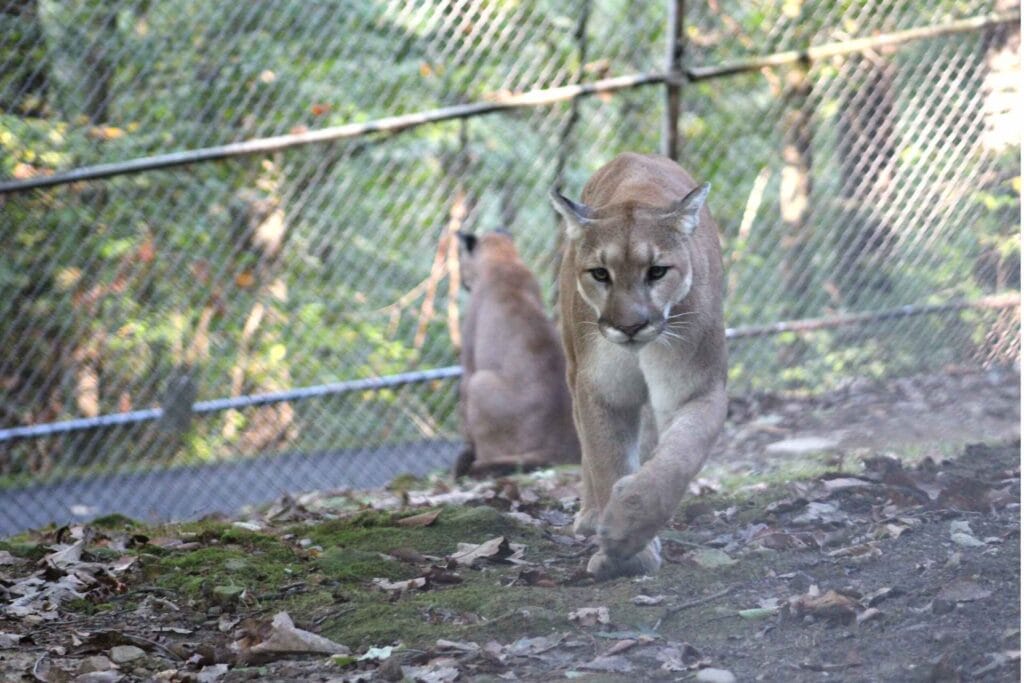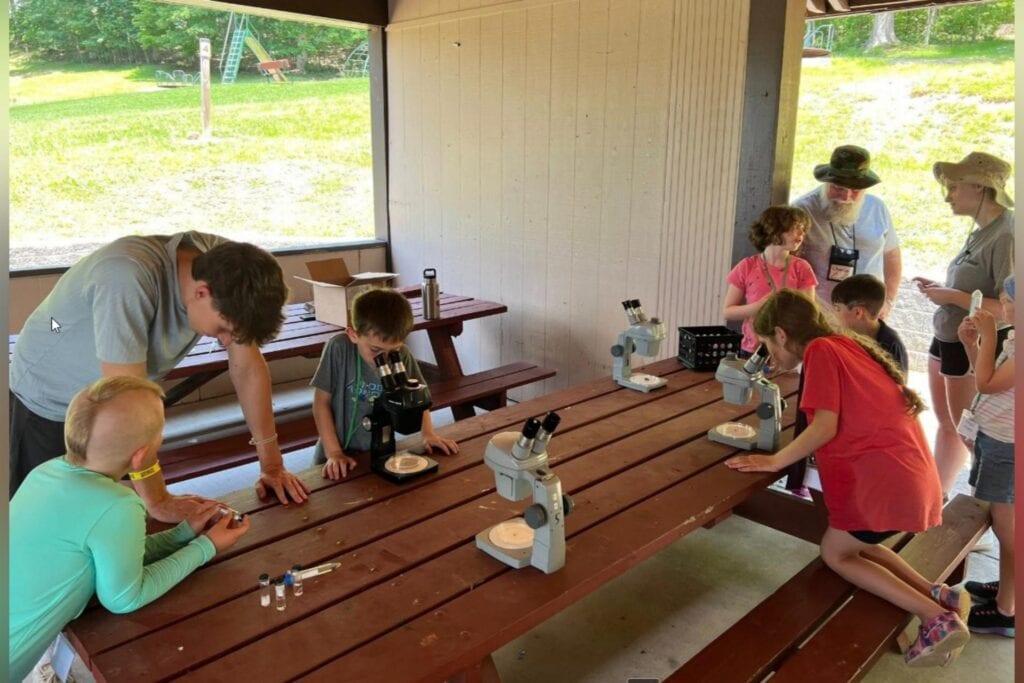FRENCH CREEK – Mountain lions were once one of the largest predators in West Virginia, and in their absence, the population of their primary prey – deer – has grown dramatically.
The West Virginia Wildlife Center is home to one mountain lion that arrived in 2019 and turned nine year old this year. West Virginia State Wildlife Center biologist Trevor Moore said they initially acquired two mountain lions from the Columbus Zoo in 2019 because the cats were not adapting well to life at the zoo. Unfortunately, one of the mountain lions passed away, leaving his brother as the lone lion at the Wildlife Center.
“They’re mostly gone in West Virginia; they have home ranges of hundreds of square miles, so we may get a transitory cougar coming through and then reading on some of the history, there’s been some sightings where people either had them illegally as pets and they got out, or other things like that if there have been sightings,” Moore said. “As far as the DNR and a lot of the other agencies are concerned, there’s no breeding population in West Virginia at all.”
Mountain lions – also commonly known as cougars, pumas, panthers, or catamounts – used to be all over North and South America, including West Virginia, until settlers extirpated them from the state.
“The last one was documented in Randolph County in the early 1900s, so it’s been over 100 years easily since we’ve had them here,” Moore said. “The biggest effect that we see from that is the increase in the deer population. Deer have just exploded here, and then you probably will get increases in the other predator populations as well.”
This means the coyote, fox and bear population has also experienced an increase because they no longer compete for space or resources.
“Bears and cougars don’t compete necessarily as directly as maybe something like cougars and wolves do for prey species, but it’s just another predator that’s not there, that’s not harassing them, so their population can do better,” Moore said. “Up here in North America, they almost exclusively eat deer and that’s not to say they won’t eat rabbits and other smaller animals, but their main diet is probably over 70 to 80 and, in some cases, over 90 percent deer.”
The mountain lion at the Wildlife Center eats deer 100 percent of the time except for occasional treats, and the center asks community members to call them if they see a deer on the side of the road. DNR officers will drive as far as Hodgesville to collect the deer to feed their mountain lion.
“Especially during the fall, they start ramping up to build fat reserves, and he can eat 12 pounds of meat a day,” Moore said. “When we had two of them, we were going through 25 pounds of meat a day.”
The U.S. has about three subspecies of mountain lion, including the Florida panther, which is a little smaller; the eastern mountain lion, which is what resided in West Virginia; and the western mountain lion.
“I grew up with the western mountain lions in Utah and they’re very, very active and there’s very active populations in the western United States right now, not to mention all down through South America as well,” Moore said. “It’s not easy to see one in the wild. If you do, it’s probably because you’re either very observant and you saw it at a distance or because they wanted you to see them. They’re ambush predators, so that’s all they do – they hide from people and other animals.”
They are also nocturnal or crepuscular, the most active during twilight, which doesn’t make it easy to spot them in the wild.













